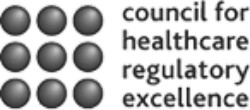 The origins of the phrase ‘balls-up’ are obscure. Some say that it arises from an awkward sexual encounter, but Dr No prefers a nautical origin. A vessel aground can be said after a fashion to be anchored, in that it is attached to the sea bed; and it is also unable to manoeuvre, or ‘not under command’, as the rules have it. A vessel at anchor carries one black ball, a vessel not under command two black balls, and thus a vessel that has run aground and is in trouble carries three black balls, a situation commonly and naturally referred to as a complete balls-up.
The origins of the phrase ‘balls-up’ are obscure. Some say that it arises from an awkward sexual encounter, but Dr No prefers a nautical origin. A vessel aground can be said after a fashion to be anchored, in that it is attached to the sea bed; and it is also unable to manoeuvre, or ‘not under command’, as the rules have it. A vessel at anchor carries one black ball, a vessel not under command two black balls, and thus a vessel that has run aground and is in trouble carries three black balls, a situation commonly and naturally referred to as a complete balls-up.
The Council for Healthcare Regulatory Excellence, quango to the quangos, has a logo featuring not three but nine balls suspended in mid-air. It is an inspired image for a quango that not only lacks balls in the right place, but has also shown itself capable of repeated balls-up after balls-up, most recently in its eye-wateringly off-the-wall review of the GMC decision to allow the Diamorphine Queen to remain on the medical register, with only trivial and time-limited conditions on her practice.
As quango to the quangos, the CHRE has a responsibility to scrutinise fitness to practice decisions made by healthcare regulatory bodies, including the GMC. In particular, Section 29 of the National Health Service Reform and Health Care Professions Act 2002 allows – note, allows, not requires – the CHRE refer to the courts FTP decisions that it considers are both ‘unduly lenient’ and that such a referral is ‘desirable for the protection of members of the public’.
Astute readers familiar with the ways of quangos will have already spotted that, when it comes to quanging, the quango to the quangos is somewhat hobbled in what it can quang. First there is the woolly and legalistic notion of ‘unduly lenient’ – a phrase if ever there was to keep m’learn’d friends in claret for many a day as they debate its meaning; and then there is the apparently well-meaning but critically limiting requirement that referral be ‘desirable’ for public protection.
The matter of what amounts to undue lenience has already been before the courts, and the fog densened by a requirement that the regulators’ decision must be ‘manifestly inappropriate’. Inappropriate – a ghastly word at the best of times – here proves itself as hard to pin down as the wind itself; and the inevitable effect is to raise greatly the bar that must be crossed if a S29 referral is to proceed.
These obstacles to a S29 referral can be seen at work in the CHRE’s review of the GMC’s Barton decision. The three-man CHRE panel – which had two ex-GMC goons on it (see Rita Pal’s excellent forensic work here) – that considered Barton’s case not only struggled to find the GMC’s decision to allow Barton to practice with conditions ‘unduly lenient’ and ‘manifestly inappropriate’; they also opined that, since Barton was about to retire, the risk to the public is minimal. Neither the undue leniency not the threat to the public tests were met, and panel found that – despite disagreeing with the GMC’s decision – they were unable to refer the decision to the courts.
The CHRE reveals itself to be hobbled. We shall probably never know whether the CHRE logo designer was a wicked wit with a mind bent on sexual innuendo, a nautical type who spotted that the CHRE was aground and unable to manoeuvre, or an innocent who accidentally caught the Council’s essence. What we do know is that it doesn’t have the balls to do its job.
